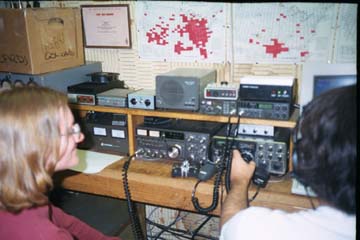
N5XU participated in the ARRL January VHF Sweepstakes conducted from 1900UTC 22 January to 0400UTC 24 January 2000. We operated in the limited multioperator class, with KB5LBN, W5JLP, N3TNN/5, K5TR, and KM5FA operating. We were active on 50 MHz, 144 MHz, 222 MHz, 432 MHz, and 1296 MHz.

|
Propagation was disappointing this contest. We saw only three minutes of Eskip on six meters, and no enhanced propagation on any other bands. In fact, propagation above 144 MHz seemed down from normal conditions. This was the first contest in a long time in which we were unable to work outside of Texas on 144 MHz. We didn't even work or hear a single Dallas area station on 222 MHz or 432 MHz. 1296 MHz continues to be a fun band, and we improved our own personal distance record by working W5UWB in EL17ax at 160 miles. The first station to work us on all five bands was W5DF/R with our first 1296 MHz contact at 2047 on Saturday.
We had quite a few operators this contest. Monique N3TNN/5 operated for several hours on Saturday, mostly working 144 MHz and 432 MHz SSB stations while Ken KM5FA worked 50 MHz and 222 MHz. George K5TR took over on Saturday night and helped make sure that the QSO totals and rate stayed as high as we could drive them under the poor conditions. Sunday morning was kind of slow, but Louisa KB5LBN and Johanna W5JLP showed up and each made contacts with some of the rovers driving around the Texas Hill Country. These were the first SSB contacts that either of them had made above 30 MHz. Ken KM5FA worked the duration of the contest, and had the good fortune to be pounding out CQs at the right time and place to work a couple of stations on 50MHz sporadic E.
Nothing beats the opening rate of the contest. The 36 hour we had at 1900 is the best single VHF contest hour ever from this station. The rate picked up again toward dinner. We only had two zero hours on Sunday, a seemingly inevitable problem on VHF from N5XU when the bands are dead (it was not for lack of zealous effort, however.) For 180 QSOs, we made 143 band changes. There were a lot more FM stations to work this contest than ever before, which was something of a surprise. We only worked one FM station outside of our own grid square, though, and we had some problems working stations on 70cm FM, where our radio does not cover 440-450 MHz (it is a Yaesu FT-726R, and 440-450 MHz was a separate band module that we do not have.) 46% of our QSOs were with our own grid EM10, and the FMers, poor band conditions, and fewer rovers were a large reason for this.
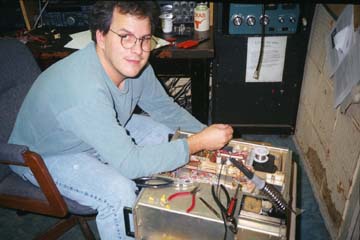
|
Nothing went seriously wrong with our equipment this contest. This was our first contest with real power on 222 MHz. Last semester, the University Coop Bookstore donated funds to UTARC that helped us purchase an AM-6155 amplifier. Terry AB5K donated a Amphenol transfer relay, and George K5TR did the conversions necessary for 222 MHz. This amplifier puts out over 400 watts on 222 MHz, and helped us make contacts on 222 MHz with a lot less trouble than in the past. We worked one new grid square on 222 MHz that we probably would not have made without the amplifier. If there had been any rover activity out to our east, we likely could have worked a few more grids that way, as well.
One thing we had trouble with at the end of each day was the rotor. All of our antennas are on one rotor, and all of the moving around one does during a VHF contest can be a lot of strain. Toward the end of each day, our rotor's brake would sometimes not engage. When this happens, the antennas tend to settle slowly clockwise to south as the wind blew around. This was especially annoying on Sunday night when six meters opened up to southern California and the rotor kept trying to rotate to the north! This will obviously need to be looked at.
| Frequency | QSOs | Points | Grids |
|---|---|---|---|
| 50 MHz | 44 | 44 | 11 |
| 144 MHz | 75 | 75 | 14 |
| 222 MHz | 18 | 36 | 8 |
| 432 MHz | 35 | 70 | 8 |
| 1296 MHz* | 8 | 24 | 7 |
| Total | 180 | 249 | 48 |
* Submitted as check log only, not included in totals
| Claimed score | 9,225 |
|---|
Contest Logging was done with TR LOG contest logging software. The following reports and log were created using TR Log's post-contest processor.
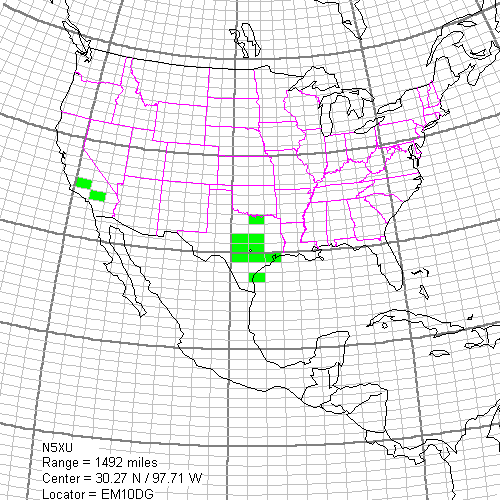
Grids worked: DM05, DM14, EL09, EL17, EL19, EL29, EM00, EM01, EM10, EM11, EM13
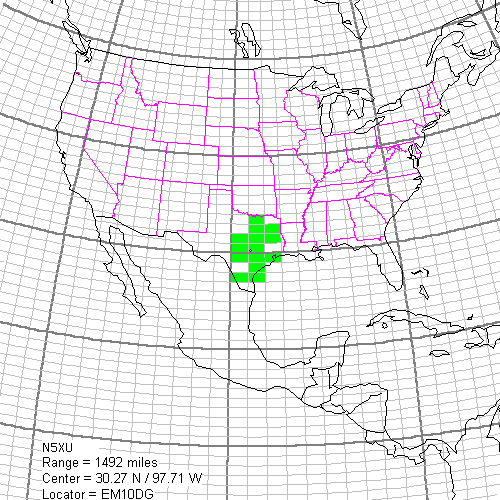
Grids worked: EL07, EL09, EL17, EL18, EL19, EL29, EM00, EM01, EM10, EM11, EM12, EM13, EM21, EM22
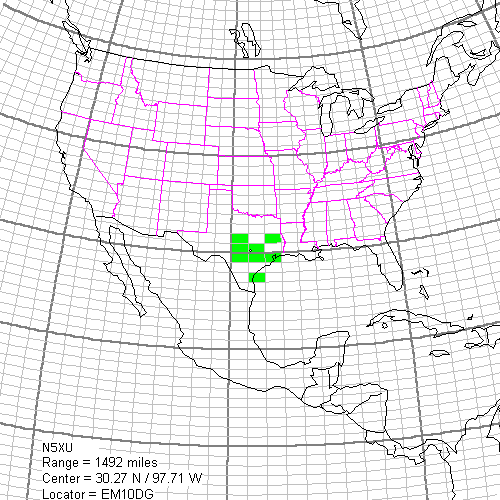
Grids worked: EL09, EL17, EL19, EL29, EM00, EM01, EM10, EM21
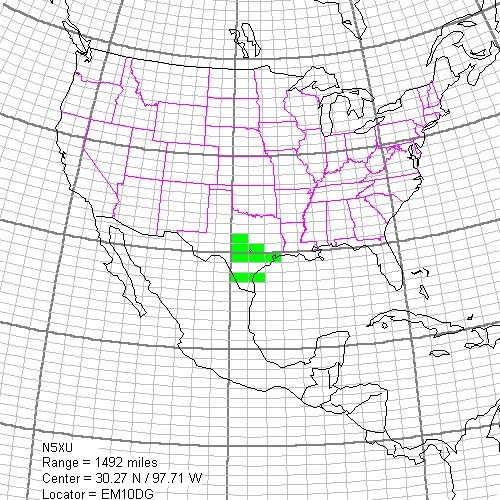
Grids worked: EL07, EL09, EL17, EL19, EL29, EM00, EM01, EM10
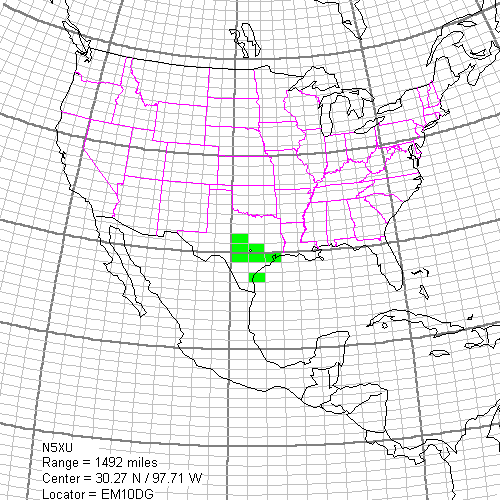
Grids worked: EL09, EL17, EL19, EL29, EM00, EM01, EM10
|
Last Updated 26 June 2020 wm5r@wm5r.org |